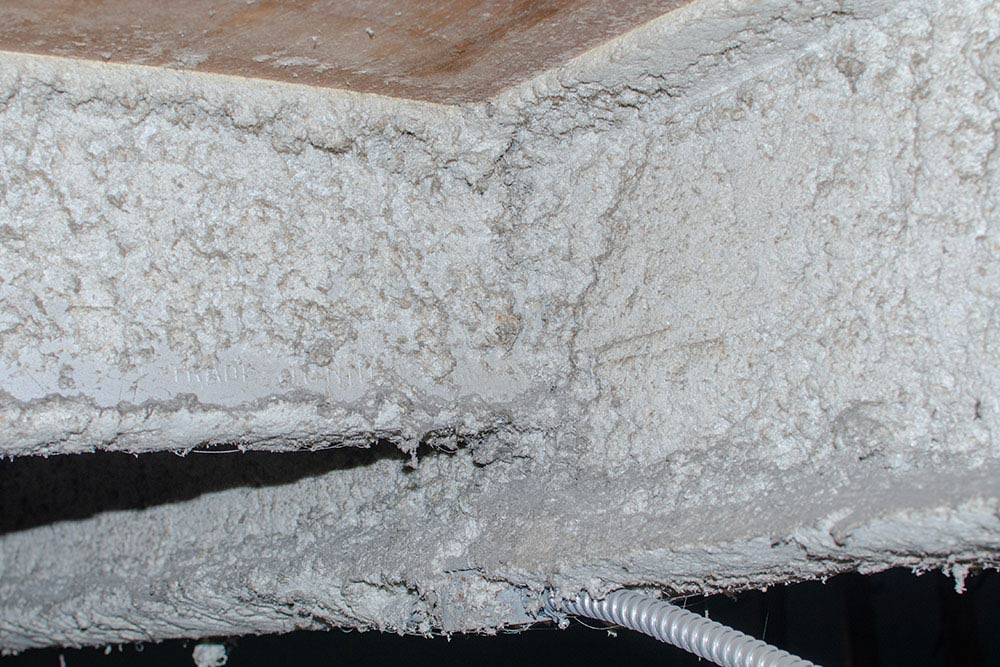
Tradespeople like construction workers, gardeners, electricians and plumbers often find surprises while working on old buildings. One surprise that’s never welcome is the presence of asbestos insulation.
Although it was once commonly used in buildings throughout the UK, asbestos insulation is a highly hazardous material. Suppose your work involves breaking apart walls or fixtures in older structures. In that case, you must know about the health risks of insulation containing asbestos.
What is Asbestos Insulation and Why is It So Hazardous?
Many homes and office buildings built between the start of the 20th century and 2000 contain asbestos insulation. In the past, building standards in the UK and our knowledge of hazardous materials weren’t as good as today.
Asbestos was believed to be a completely safe building material. Companies and construction workers valued asbestos for its strength, flexibility, and ability to withstand heat. Asbestos was also available in abundance and cheap. For these reasons, it was considered the perfect material for insulation and fireproofing. Or, at least, that’s what people thought at the time.
Unfortunately, they couldn’t have been more wrong. As it turns out, when you break asbestos insulation, it releases tiny fibres into the air. When inhaled or ingested, asbestos fibres can cause life-threatening, incurable diseases like mesothelioma, asbestosis and lung cancer. Tragically, by the time these diseases are diagnosed, it’s often too late for treatment.
In most cases, asbestos-related diseases are fatal.
More than 5,000 people died in 2020 in the UK due to past asbestos exposure, according to figures from UKATA. It’s estimated that 50% of all UK homes contain asbestos. You’ll still find insulation containing asbestos in industrial buildings, offices, schools and even the UK parliament.
The Most Common Types of Asbestos Insulation
Asbestos insulation was a prevalent building material used in buildings across the UK. If your job often takes you into older buildings, you’ll likely come across asbestos insulation in some form.
The most common types of asbestos insulation include:
Loose-Fill Asbestos Insulation

Also called blown-in insulation, loose-fill insulation looks fluffy and granular, much like sheep’s wool. This kind of insulation can contain a very high percentages of asbestos. Even a slight breeze can release asbestos fibres from loose-fill insulation. It’s incredibly toxic and highly hazardous to health.
Asbestos Block Insulation

Asbestos insulation also came in the form of large blocks known as Asbestos Insulating Board (AIB). AIB blocks were manufactured using almost pure asbestos. It’s stable if kept in place, but large amounts of asbestos fibres are released if block insulation is drilled, cut or sawn. AIB blocks were commonly painted, so it isn’t easy to recognise them.
Asbestos Pipe Wrapping Insulation

You’ll find heating pipes, ducts and plumbing systems are often covered in asbestos insulation wrappings. Over time, these wrappings can disintegrate and release asbestos fibres into the air. Pipe wrappings can look like old wool blankets, corrugated paper or cardboard.
Other Types of Insulation That May Contain Asbestos
Vermiculite Insulation
Vermiculite insulation is also a type of loose-fill insulation. It’s usually grey-brown or silver-gold in colour with a pebble-like appearance. Not all kinds of vermiculite insulation will contain asbestos. If undisturbed, the asbestos in certain types of vermiculite insulation is reasonably stable. Still, if broken, asbestos particles can be released into the air.
Spray-On Asbestos Insulation
Often used in commercial and industrial building walls, ceilings and beams, spray-on asbestos looks like a bumpy white plastic coating. Spray-on insulation coatings made before 1990 usually contain a high percentage of asbestos. If broken, this insulation can release high levels of asbestos fibres into the air.

Other common types of insulation, such as cellulose or fibreglass, aren’t as much of a health hazard but can look like insulation containing asbestos.
What to Do If You Find Asbestos Insulation
Suppose you suspect a building you’re working in contains asbestos insulation.
In that case, you should immediately stop all work, vacate the premises and have the area surveyed by an accredited asbestos surveyor. In most cases, the asbestos must be removed by a licensed asbestos contractor before work can resume. Where you can’t remove the asbestos insulation, work must only be continued by licensed asbestos contractors.
All types of asbestos were prohibited entirely for use in any building in the UK in 1999. Currently, the Control of Asbestos Regulations 2012 outlines the safety procedures you must follow if asbestos is found. You can find more information about safely working with asbestos via the Health and Safety Executive (HSE) website.
Construction managers, owners of construction companies and employees are all legally obliged to perform a risk assessment to determine whether or not a work site contains asbestos. Suitable controls must be in place to prevent the harm it can cause to a reasonably practicable level.
Online Asbestos Awareness Training
It’s also advisable to have your staff complete asbestos awareness training so they can recognise asbestos and know what to do if they discover it on a work site. Providing your team with the proper training will ensure that you meet your legal obligations and that everyone is aware of the hazards posed by the presence of asbestos to stay safe at work.
Our Asbestos Awareness training course is fully accredited and certified. You can complete the course online so it won’t interfere with your work schedule.





























































































































































































































































































































































































































































































































































































































































































































































